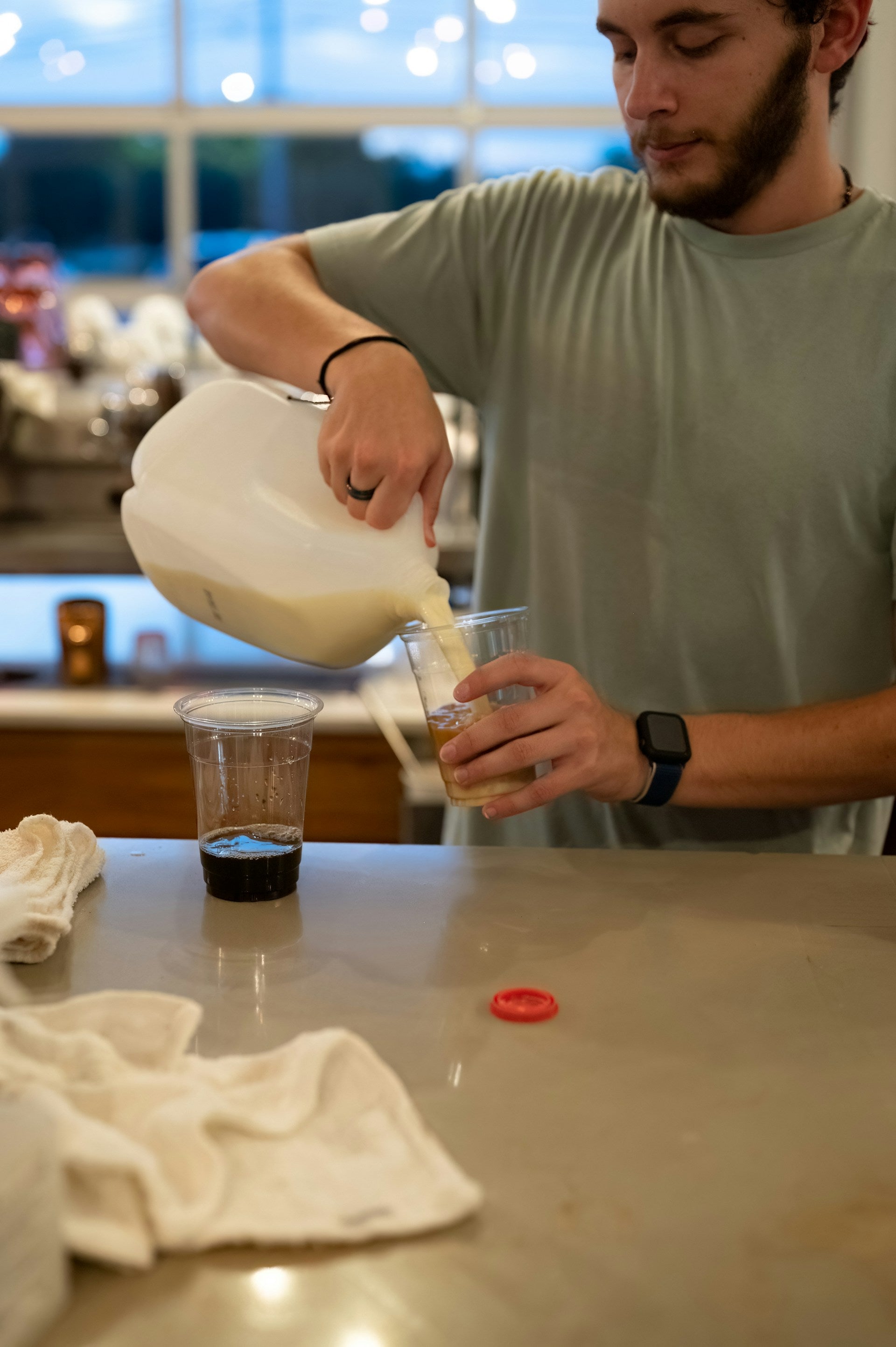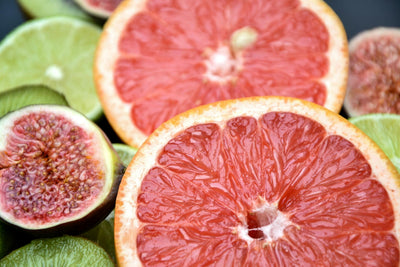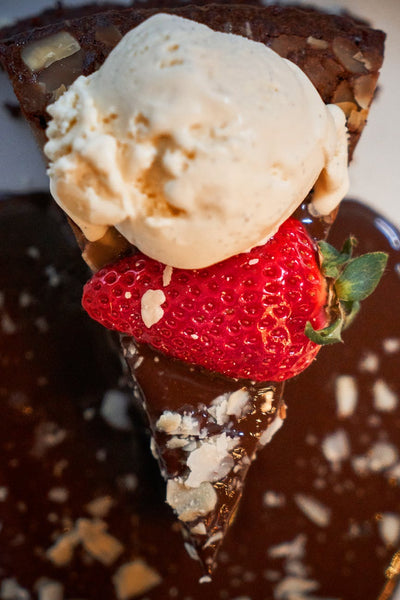Importance of Refrigeration
Understanding the Role of Refrigeration
Refrigeration plays a pivotal role in preserving the freshness and extending the shelf life of perishable foods like milk. By maintaining a consistent cold environment, refrigeration slows down bacterial growth that can spoil food. It's not just about keeping your milk cold; it's about safeguarding it from the proliferation of harmful microorganisms that thrive at warmer temperatures. Understanding this will help you appreciate why it's essential to promptly return milk to the fridge after use. For more insights into optimal refrigerator temperatures, take a look at our guide on cracking the code: decoding the ideal fridge temperature.
Potential Risks of Leaving Food Unrefrigerated
Leaving milk or any perishable food outside the refrigerator can pose significant health risks. The danger zone for bacterial growth is between 40°F and 140°F, where bacteria can double in number in as little as 20 minutes. Consuming food that has been left out for too long can lead to foodborne illnesses. This is particularly concerning for high-risk individuals such as young children, the elderly, pregnant women, and those with weakened immune systems. Additionally, the spoilage can impact taste, texture, and nutritional value. For those who prioritize the longevity of their food items, like pizza lovers, understanding the risks is key, as highlighted in our article on how long pizza stays fresh: mastering the storage of pizza in the fridge.
Guidelines for Milk Storage
Proper storage of milk is vital to maintain its freshness and prevent it from spoiling prematurely. Whether you're a homeowner, a chef, or simply enjoy a cold glass of milk, understanding and following the correct storage guidelines is essential.
Recommended Storage Temperature for Milk
The recommended storage temperature for milk is at or below 40°F (4°C). This cold environment helps slow the growth of bacteria and extends the shelf life of the milk. It's crucial that your fridge maintains this temperature consistently; fluctuations can accelerate the spoilage process. For insights into optimal fridge temperatures, consider reading our guide on cracking the code to decoding the ideal fridge temperature.
| Milk Type | Storage Temperature |
|---|---|
| Fresh Milk | 32°F - 40°F (0°C - 4°C) |
| Opened Milk | 32°F - 40°F (0°C - 4°C) |
| Unopened Milk | 32°F - 40°F (0°C - 4°C) |
Factors Affecting Milk Shelf Life
Several factors can influence how long milk can remain fresh outside of refrigeration:
- Initial Bacteria Levels: The level of bacteria present in the milk when it's processed can affect its longevity. Pasteurization helps reduce these bacteria to safe levels.
- Temperature Fluctuations: Milk should be kept cool at all times. If it's exposed to temperatures above 40°F (4°C) for extended periods, its shelf life is significantly reduced.
- Exposure to Light and Air: Light can degrade the quality of milk, and air exposure can introduce new bacteria into the milk, both of which can lead to faster spoilage.
- Seal Integrity: Proper sealing of the milk container is crucial. If the seal is broken, contaminants can enter, and the milk may spoil sooner.
- Humidity Levels: High humidity can encourage bacterial growth, so storing milk in a low-humidity part of the fridge, like the main shelf, is preferable.
Understanding these factors can help you ensure that your milk stays fresh for as long as possible. If you're concerned about space, explore options like the charming and compact retro small refrigerator or the best bottom freezer refrigerator for organization to keep your milk at the right temperature without taking up too much room.
By adhering to these storage guidelines, you can enjoy your milk with confidence, knowing it's as fresh and delicious as it should be.
How Long Can Milk Last Outside the Fridge?
When it comes to dairy products like milk, understanding their storage life outside refrigeration can help prevent spoilage and foodborne illnesses. Let's delve into the duration milk can remain unrefrigerated and the telltale signs that indicate it's gone bad.
Room Temperature Limits for Milk
Milk is highly perishable and can only last outside the fridge for a limited period of time before it starts to spoil. Typically, milk should not be left out at room temperature for more than two hours, as recommended by food safety experts. This timeframe is significantly reduced if the ambient temperature is above 90°F (32°C), where milk can start to spoil within just one hour.
| Ambient Temperature | Time Limit for Unrefrigerated Milk |
|---|---|
| Below 90°F (32°C) | Up to 2 hours |
| Above 90°F (32°C) | 1 hour or less |
Adhering to these time limits is crucial, especially during warm weather or in environments without climate control. If you're looking to understand more about the importance of temperature regulation, consider reading cracking the code: decoding the ideal fridge temperature.
Signs of Spoiled Milk
Recognizing the signs of milk spoilage can help you avoid the unpleasant experience of consuming a product that may be unsafe. Spoiled milk typically exhibits several clear indicators:
- Sour Smell: One of the first signs is an off, sour odor that is distinct from the creamy scent of fresh milk.
- Change in Texture: Spoiled milk may have a lumpy or curdled consistency rather than a smooth and fluid one.
- Taste Alteration: If the milk tastes sour or off, it's a clear sign that it has gone bad.
- Discoloration: Any change in color, such as a yellowish tint, can indicate spoilage.
If you notice any of these signs, it's important to discard the milk immediately to avoid potential health risks. For guidelines on when to safely consume or dispose of various food items, take a look at our article on how long can your steak safely sit in the fridge for comparison.
In summary, while milk can be a nutritious addition to your diet, ensuring that it is stored correctly and consumed before spoilage is key to maintaining its safety and quality. Always remember to check for signs of spoilage and adhere to storage guidelines for the well-being of you and your family.
Safety Concerns
When considering the storage of milk, one of the primary safety concerns is the potential for bacterial growth, which can lead to foodborne illnesses. Understanding the risks associated with unrefrigerated milk is key to maintaining your health and that of your household.
Bacterial Growth in Unrefrigerated Milk
Milk is a nutrient-rich liquid, which makes it an ideal breeding ground for bacteria. When milk is left out of the fridge, it enters the "danger zone" — temperatures between 40°F and 140°F where bacteria multiply rapidly. The longer milk is kept in this zone, the greater the risk of spoilage and bacterial growth, including pathogens like Salmonella, E. coli, and Listeria.
It's crucial to store milk at the recommended temperature to inhibit bacterial proliferation. Cracking the code: Decoding the ideal fridge temperature provides insights into the optimal settings for your refrigerator to ensure milk remains safe to consume.
Risks of Consuming Spoiled Milk
Drinking milk that has been compromised by bacterial growth can result in food poisoning. Symptoms may include stomach cramps, nausea, vomiting, diarrhea, and fever. These symptoms can appear within hours or up to several days after consuming spoiled milk and can be particularly severe for young children, the elderly, pregnant women, and individuals with weakened immune systems.
To mitigate these risks, always inspect your milk for signs of spoilage, such as an off odor, curdled texture, or sour taste. If you suspect that milk has been left out for an extended period, err on the side of caution and dispose of it. For guidance on when to discard milk, When to safely consume milk left out and Proper disposal methods for spoiled milk can offer valuable information.
Proper milk storage is not only about preserving its freshness but also about ensuring the well-being of those who consume it. By being vigilant about storage conditions, you can prevent the harmful effects of consuming milk tainted by bacterial growth.
Tips for Proper Milk Storage
To ensure that your milk remains fresh and safe to consume, proper storage is key. Below are essential tips to help you maintain the quality and extend the longevity of your milk.
Importance of Proper Sealing
To preserve the freshness of milk, it's crucial to keep it sealed tightly. Proper sealing prevents the milk from absorbing flavors and odors from other foods in the refrigerator and also reduces the chance of bacterial contamination. When you’ve poured the milk you need, make sure to close the container firmly. If the original packaging isn’t resealable, consider transferring the milk to a clean, airtight container.
Here are steps to ensure your milk is well sealed:
- Close the lid tightly on the milk jug or carton.
- If transferring to a different container, ensure it has a secure lid.
- Minimize the time milk spends unsealed and exposed to the open air.
By following these steps, you help to safeguard the milk against spoilage and extend its usable life.
Utilizing Refrigeration for Longevity
The refrigerator is your ally in keeping milk at its best. Storing milk in the coldest part of your refrigerator, typically at the back, away from the door, can significantly extend its freshness. The recommended storage temperature for milk is between 32°F (0°C) and 39°F (4°C).
For a better understanding of the ideal fridge temperature settings, you can read our article on cracking the code decoding the ideal fridge temperature.
Here’s a basic guideline for refrigerator settings to optimize milk storage:
| Fridge Area | Temperature Range |
|---|---|
| Main shelves | 32°F - 39°F |
| Refrigerator door | 40°F - 45°F |
Remember, storing milk in the door shelves, where temperatures fluctuate with frequent opening, can shorten its shelf life. Instead, reserve this area for less perishable items. For more advanced organization tips, explore our piece on say goodbye to clutter best bottom freezer refrigerator for organization.
In summary, to maintain the quality of your milk, keep it sealed and chilled. Proper storage can prevent waste and ensure you enjoy every drop. Whether you have a full-sized family fridge or a charming and compact retro small refrigerator, these tips apply to ensure your milk stays fresh and enjoyable until the last glass.
Alternative Storage Options
When your fridge is not an option, there are alternative storage methods to consider for keeping your milk at the right temperature. These methods can be particularly useful when you are on the move or during power outages.
Using Coolers for Temporary Storage
Coolers can be a game-changer for temporary milk storage, especially when you're away from home or experiencing a temporary disruption in power. To effectively use a cooler for storing milk, it's crucial to pre-chill the milk and the cooler before use. Ice packs or frozen gel packs can maintain the cooler's low temperature, ensuring that the milk stays within safe temperature limits.
| Storage Method | Approximate Safe Duration |
|---|---|
| Cooler with Ice Packs | 2-4 hours |
| Insulated Cooler Bag | 1-3 hours |
For more information on how to store other perishable food items, check out our guide on pizza stays fresh mastering the storage of pizza in the fridge.
Freezing Milk for Extended Preservation
Freezing milk can extend its shelf life well beyond what's possible in a fridge. When freezing milk, use an airtight container and leave some space at the top as milk expands when frozen. Thawed milk might separate and have a grainy texture, but it's still safe to consume and perfect for use in cooking and baking.
| Type of Milk | Freezer Shelf Life |
|---|---|
| Whole Milk | 3-6 months |
| Skim Milk | 3-6 months |
| Plant-Based Milk (varies by type) | 3-6 months |
For a comprehensive look at optimizing your fridge and freezer storage, explore our selection of articles, including tips for organizing with a say goodbye to clutter best bottom freezer refrigerator for organization and understanding the best way to maintain your food's freshness with cracking the code decoding the ideal fridge temperature.
Remember, the clock is always ticking on perishable items like milk, so whether you're using a cooler or freezing your milk, it's important to keep a close eye on storage times to ensure quality and safety.
When to Discard Milk
Understanding when to discard milk is crucial for maintaining food safety and preventing foodborne illnesses. When milk is left out of the fridge beyond a certain timeframe, it may no longer be safe for consumption.
When to Safely Consume Milk Left Out
Milk should be consumed or refrigerated within two hours of being left out in temperatures below 40°F. If the temperature is above 90°F, the time is reduced to just one hour. If you've accidentally left milk out past these timeframes, it's safer to discard it. For more detailed information on the ideal fridge temperature, you can refer to our article on cracking the code decoding the ideal fridge temperature.
| Temperature Range | Maximum Time Out |
|---|---|
| Below 40°F | 2 hours |
| Above 90°F | 1 hour |
Proper Disposal Methods for Spoiled Milk
If milk has been determined spoiled due to being out of the fridge for too long, proper disposal is key. Spoiled milk should be poured down the sink to avoid contaminating other foods or surfaces. The container should be rinsed and recycled if possible. If you notice a foul odor or chunks in the milk, these are clear signs of spoilage, and the milk should be discarded immediately.
For safe consumption, you should always check the milk for any changes in odor, texture, or color before using it. Consuming spoiled milk can lead to food poisoning, so it's essential to err on the side of caution. To understand how to store other food items correctly and maximize their freshness, check out our article on preserve the flavor how long does pizza stay good in the fridge.
Remember, when in doubt, throw it out. It's better to discard milk that may be unsafe than to risk your health.
How Long Can Milk Last Outside the Fridge?
When it comes to dairy, the freshness and safety of milk is a top concern for many. Understanding the limits of how long milk can remain unrefrigerated is key to preventing foodborne illness.
Room Temperature Limits for Milk
Milk should always be stored in the fridge, but if left out, it can only stay at room temperature for a short period before it starts to spoil. The United States Department of Agriculture (USDA) recommends that milk should not be left out of the fridge for more than two hours. If the temperature is above 90°F (32°C), this time decreases to just one hour.
| Temperature | Time before milk spoils |
|---|---|
| Below 90°F (32°C) | Up to 2 hours |
| Above 90°F (32°C) | Up to 1 hour |
For more information on proper food storage and safety, you might want to read about cracking the code decoding the ideal fridge temperature.
Signs of Spoiled Milk
You can often tell if milk has gone bad by its appearance and smell. Spoiled milk may have a sour odor, a yellowish color, and a lumpy texture. If you observe any of these signs, it's best to discard the milk immediately.
Safety Concerns
Bacterial Growth in Unrefrigerated Milk
Bacteria such as Listeria, E. coli, and Salmonella can grow rapidly in milk that is not kept at the right temperature. These bacteria can pose serious health risks, especially for young children, pregnant women, the elderly, and those with weakened immune systems.
Risks of Consuming Spoiled Milk
Consuming milk that has been improperly stored and has become contaminated can lead to food poisoning. Symptoms may include stomach pain, nausea, vomiting, and diarrhea.
Tips for Proper Milk Storage
Importance of Proper Sealing
Ensure that your milk container is properly sealed to prevent the introduction of bacteria and to maintain its freshness. Storing milk in its original container, or transferring it to an airtight container, can also help to protect it from absorbing flavors from other foods in the fridge.
Utilizing Refrigeration for Longevity
To maximize the shelf life of milk, keep it stored at a consistent temperature in the fridge, ideally between 38°F to 40°F (3°C to 4°C). The back of the fridge generally maintains a cooler temperature than the door, making it an ideal spot for storage. For insights into organizing your fridge for optimal food preservation, consider reading about say goodbye to clutter best bottom freezer refrigerator for organization.
Alternative Storage Options
Using Coolers for Temporary Storage
If you're without access to a fridge, a cooler filled with ice packs can serve as a temporary solution. This method can keep milk cold for several hours, depending on the outside temperature and the quality of your cooler.
Freezing Milk for Extended Preservation
Freezing milk can extend its shelf life significantly. When frozen, milk can last up to 6 months. However, it's important to note that freezing may cause some changes in texture and taste. Thawed milk is best used for cooking or baking rather than drinking.
For more information on refrigeration and freezing options, explore keep your basement cool explore the top 24 undercounter freezers.
When to Discard Milk
When to Safely Consume Milk Left Out
If milk has been left out for longer than the recommended time, it's safest to discard it. Consuming milk that has been out for an extended period can increase the risk of foodborne illness.
Proper Disposal Methods for Spoiled Milk
Spoiled milk should be poured down the sink, and the container should be recycled or disposed of appropriately. Never consume milk if you're unsure about its safety. It's always better to err on the side of caution to avoid the potential health risks associated with spoiled milk.
Get Your Upgrade or New Addition at Fridge.com
Shop the world's best brands at Fridge.com.
Whether you're searching for your perfect fridge, freezer, wine fridge, beer fridge, ice maker, or kegerator, we have what you need.
We also have tons of awesome articles about kitchen stuff and home news. Enhance your home, garage, backyard, patio, and office with the coolest essentials. With every necessary type of residential refrigerator or freezer in our collection, we've got you covered.
Elevate your game and shop now at Fridge.com!






